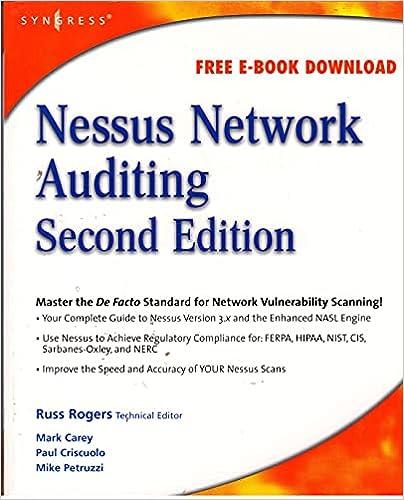Question
A. Page 5-7 of the text mentions qualified tuition reduction plans under which an educational institution may reduce or pay the tuition for its employees,
A. Page 5-7 of the text mentions qualified tuition reduction plans under which an educational institution may reduce or pay the tuition for its employees, and the employees will not be taxable on the assistance.
What criteria are used to determine whether the employer qualifies to provide nontaxable qualified tuition reductions or payments under such a plan?
Which individuals may receive the nontaxable qualified tuition reductions or payments?
Are there circumstances in which a tuition reduction or payment made by a qualifying employer for a qualifying individual will nevertheless be taxable to the employee? If so, describe these circumstances.
B. On pages 6-13 and 6-14, the text explains that taxpayers are not allowed a business deduction for political contributions or for expenses incurred for lobbying activities.
How does the IRS define what is a political contribution that cannot be deducted? Is the disallowance limited to outright gifts, or does it extend to less direct methods of providing funds to a candidate or party? If the latter, please explain the circumstances in which the disallowance applies to something that is not an outright gift.
How does the IRS define what is lobbying, so that a taxpayer may determine what expenses are not deductible as lobbying expenses?
Many not-for-profit organizations are engaged in lobbying, but still qualify to receive deductible charitable contributions. Does this activity affect an individuals ability to claim a charitable deduction for contributions to an otherwise qualified organization? If so, in what circumstances, and how is the deduction affected?
C. On pages 7-7 and 7-8, the text explains what are casualty and theft losses that an individual may deduct, even though the losses are related to personal use property. The text gives examples of occurrences that cause losses that do not qualify as casualty losses, and states that misplacing items does not count as a theft. However, the IRS gives more detailed guidance on these issues.
What occurrences do not result in deductible casualty losses according to the IRS in addition to those listed in the text?
What occurrences do not result in deductible theft losses according to the IRS in addition to those listed in the text?
At the same time, it is explaining the occurrences that do not result in deductible casualty or theft losses, the IRS states that deductible losses can result from two specific occurrences that would seem to fall into the nondeductible category. Briefly describe these provisions.
Please answer each question in complete sentences, and cite the name and number of the IRS publication or form/instruction where you found each answer, and the page number on which the answer is found. Use your own words in the answer do not copy the IRS language. Thank you!
Step by Step Solution
There are 3 Steps involved in it
Step: 1

Get Instant Access to Expert-Tailored Solutions
See step-by-step solutions with expert insights and AI powered tools for academic success
Step: 2

Step: 3

Ace Your Homework with AI
Get the answers you need in no time with our AI-driven, step-by-step assistance
Get Started


